Table of Contents
Clarification
Heritage scrapbooking is a powerful and creative way to celebrate your family’s history, preserving cherished memories for generations to come. It combines the art of scrapbooking with genealogy, allowing you to tell the story of your ancestors through photos, memorabilia and artistic expression. In this article, we will explore the art of heritage scrapbooking, providing tips and inspiration to help you embark on a meaningful journey of documenting your family’s rich history.
Heritage scrapbooking is a captivating fusion of artistic expression and ancestral storytelling, a profound journey through time that pays homage to the generations who came before us. It is a remarkable way to honor and celebrate your family’s history, breathing life into faded photographs and preserving cherished memories for generations yet unborn. Let’s delve deeper into this art form, understanding why it is such a powerful and meaningful endeavor.
A Living Tapestry of Memories: Heritage scrapbooking transforms your family’s history into a vibrant, living tapestry. It takes you on a journey through the past, where sepia-toned photographs, handwritten letters and treasured heirlooms become the threads that weave together the narrative of your ancestors. Each page you create is a testament to their lives, struggles, triumphs and enduring legacies.
The Intersection of Art and Genealogy: This unique form of scrapbooking marries the art of creative expression with the science of genealogy. It’s not just about arranging photos and journaling; it’s about uncovering the stories behind the names, dates and faces. Researching your family’s history becomes an adventure and each piece of information you discover adds depth and richness to your layouts.
A Personal Connection to the Past: Heritage scrapbooking creates a deeply personal connection to your ancestors. As you pore over old records, interview family members and visit ancestral homes, you become a custodian of their stories. You find yourself emotionally invested in their experiences, understanding the challenges they faced and the values they cherished.
Preserving Oral Histories: One of the most precious aspects of heritage scrapbooking is the opportunity to capture oral histories. Recording interviews with elder family members ensures that their memories and anecdotes are not lost to time. These recorded voices provide a rich backdrop to your layouts, allowing your ancestors to speak directly to future generations.
A Gift for Posterity: Your heritage scrapbook is a gift to your descendants, a tangible testament to their roots and heritage. It offers them a window into the lives of those who paved the way for their existence. It instills a sense of pride in their family’s legacy and a deeper appreciation for the sacrifices and achievements of their forebears.
Tips and Inspiration: Throughout this article, we will provide valuable tips and inspiration to help you embark on your heritage scrapbooking journey. From organizing your research materials to creating visually stunning layouts, we will guide you through the process, making it accessible and enjoyable.
In essence, heritage scrapbooking is a heartfelt tribute to your family’s past, a bridge between generations and a timeless expression of love and respect. It’s a creative endeavor that allows you to honor those who came before you, ensuring that their stories are not relegated to dusty archives but are vividly preserved in the pages of your scrapbook. It’s a journey of discovery, a celebration of heritage and a legacy that will resonate with your family for years to come.
Looking for more insights? You’ll find them right here in our extended coverage: How to Do Oral History | Smithsonian Institution Archives
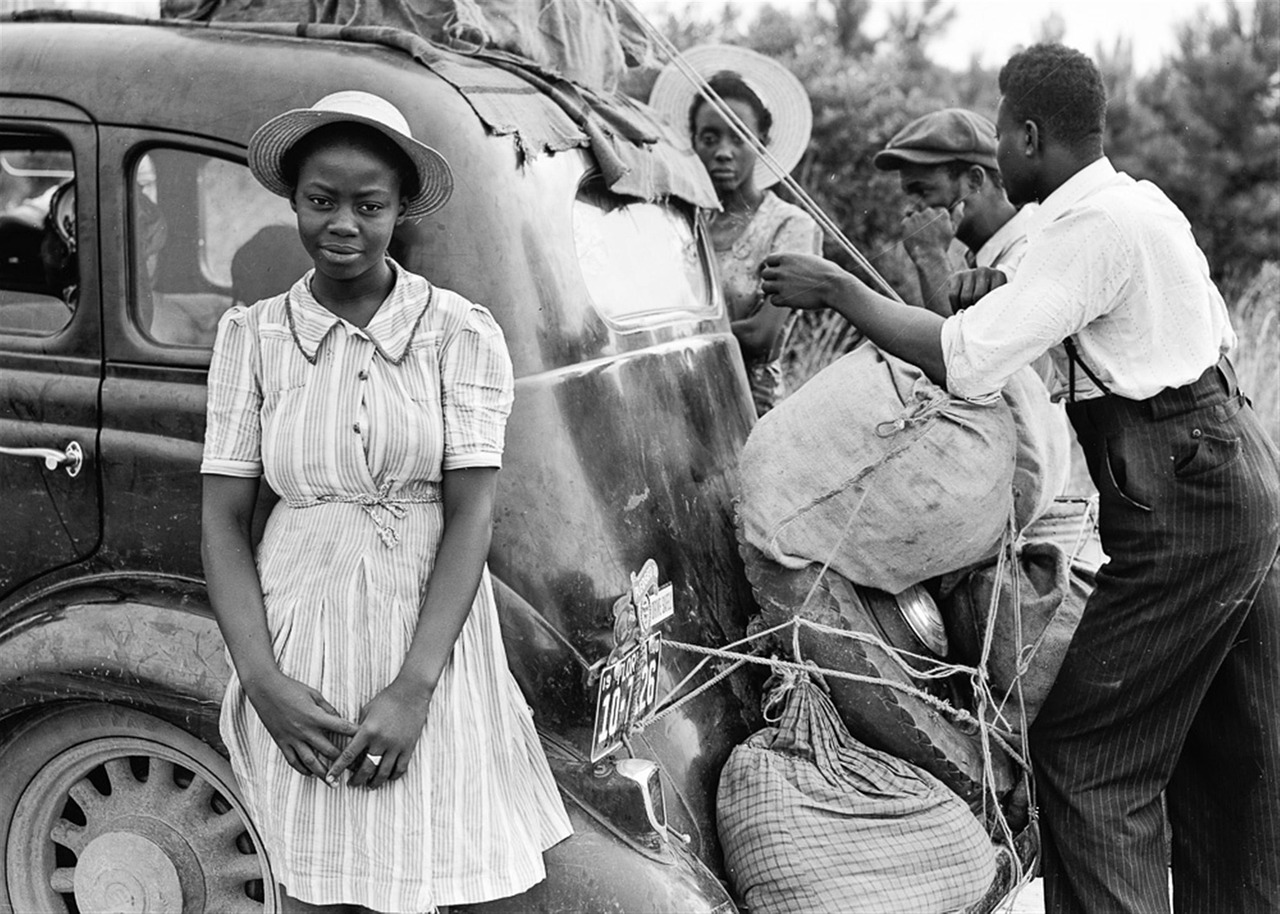
Gather Family Artifacts
Begin your heritage scrapbooking project by gathering family artifacts. These could include old photographs, letters, diaries, certificates and any other documents that offer insights into your family’s past. These artifacts are the building blocks of your heritage scrapbook.
Embarking on a heritage scrapbooking project is like opening a captivating time capsule filled with your family’s history and cherished memories. To craft a truly meaningful and visually captivating scrapbook, the initial step is to gather a treasure trove of family artifacts. These relics from the past serve as the foundation upon which you’ll construct a beautiful narrative of your family’s journey through time.
1. Old Photographs: Vintage family photos are windows into the past. Each image tells a story, capturing moments, people and places frozen in time. As you collect these photographs, you’ll uncover the faces and events that have shaped your family’s identity. From sepia-toned portraits to candid snapshots, these pictures provide the visual soul of your heritage scrapbook.
2. Letters and Diaries: The written word holds a unique power to transport us to different eras and emotions. Old letters, diaries and handwritten notes are like whispers from the past, allowing you to hear the voices of your ancestors and gain insight into their thoughts, dreams and daily lives. These intimate documents bring a personal and emotional dimension to your project.
3. Certificates and Documents: Official records such as birth certificates, marriage licenses and diplomas add a touch of authenticity to your scrapbook. They provide concrete evidence of significant life events and achievements within your family. Including these documents helps anchor your family’s story in historical context.
4. Maps and Memorabilia: Consider incorporating vintage maps, tickets, postcards and souvenirs from family travels. These items not only showcase the places your family has visited but also reflect the tastes and interests that have been passed down through generations. They add a delightful layer of visual interest and nostalgia to your scrapbook.
5. Heirlooms and Keepsakes: Family heirlooms, such as jewelry, clothing or cherished mementos, carry a sense of continuity and tradition. Integrating these tangible artifacts into your scrapbook allows you to honor the past and connect it to the present. They become touchstones that bridge generations.
As you sift through these family artifacts, you’ll likely uncover hidden stories, anecdotes and connections that you never knew existed. These pieces of the past are more than just materials; they are the heart and soul of your heritage scrapbook. With each photograph, letter, certificate and keepsake, you’ll weave a tapestry of memories that celebrate your family’s legacy, ensuring that their stories endure for future generations to cherish.
Remember, the magic of heritage scrapbooking lies not only in preserving the past but also in the act of sharing it. By compiling these artifacts thoughtfully, you’re creating a timeless tribute to your family’s history—one that will be cherished and passed down as a priceless family heirloom itself. So, gather your family’s treasures and embark on this heartfelt journey of discovery and preservation.
Explore this link for a more extensive examination of the topic: How to Write a Family History Book to Preserve Your Family Stories …
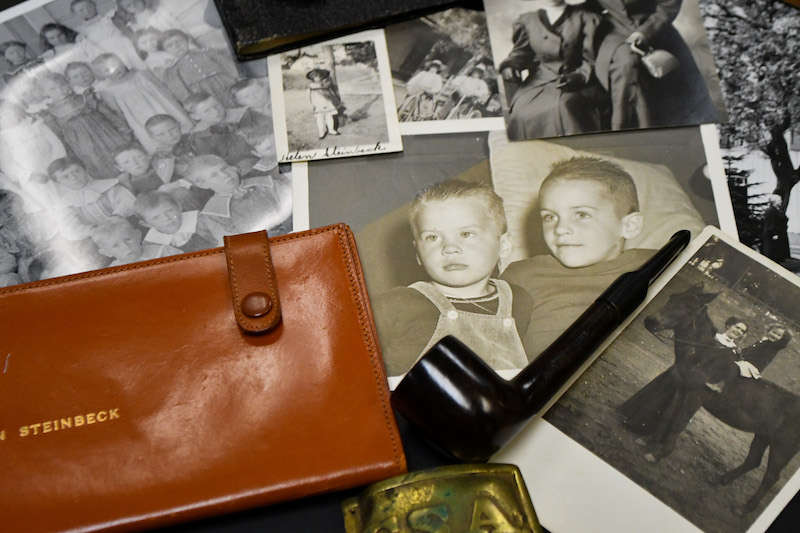
Organize Your Materials
Sorting and organizing your materials is crucial. Create a system to categorize photographs by family members, generations or events. Label and store delicate items in archival-safe containers to ensure their preservation.
Mastering the Art of Material Management: A Path to Craftsmanship
In the enchanting world of scrapbooking, where creativity knows no bounds, the journey often begins with a crucial step: sorting and organizing your treasure trove of materials. This meticulous process is akin to the conductor orchestrating a symphony, ensuring that every element finds its harmonious place in your artistic composition. As you embark on this artistic adventure, crafting your unique stories, here’s how creating a thoughtful system for categorization and preservation can elevate your craft to a level of true craftsmanship.
**1. Photographic Chronicles: Photographs are the heartbeats of your scrapbook. They encapsulate memories, emotions and stories that transcend time. To harness their power effectively, consider creating a system that categorizes them with precision. Whether you choose to sort by family members, generations or events, this meticulous organization breathes life into your narratives. It allows you to craft layouts that seamlessly weave together the threads of your family’s history or highlight the joyous moments from a special occasion.
**2. The Generational Saga: Sorting by generations is like tracing the roots of a family tree. It allows you to showcase the passage of time, capturing the essence of each era within your family’s history. From sepia-toned photographs of ancestors to the vibrant snapshots of today’s generation, this approach tells a visual story that celebrates continuity and change.
**3. Eventful Chronicles: Alternatively, organizing your photographs by events paints a vivid picture of the moments that define your family’s journey. Birthdays, weddings, holidays and milestones become chapters in a captivating narrative. The viewer can journey through time, reliving cherished moments and appreciating the tapestry of experiences that shape your family’s story.
**4. The Archival Safeguard: Preservation is not just a duty; it’s a promise to future generations. Delicate items such as vintage photographs, fragile documents or precious memorabilia deserve utmost care. Invest in archival-safe containers that shield these treasures from the ravages of time. Acid-free sleeves, photo-safe adhesives and protective enclosures are your allies in ensuring that these heirlooms endure for generations to come.
**5. The Power of Labeling: Labels are the signposts that guide your journey through the past. Labeling each item with care, detailing dates, names and descriptions, not only adds context but also preserves the stories behind the visuals. It’s the key to unlocking the narrative potential of your materials.
**6. Ease of Access: Your organizational system should not only preserve but also provide easy access. Consider creating an index or catalog that allows you to quickly locate specific photographs or memorabilia. An organized system minimizes the frustration of searching and maximizes the joy of crafting.
**7. Creativity Unleashed: Once your materials are sorted and stored, you’ll find that the creative process flows more smoothly. You can focus on the art of storytelling, knowing that your organized materials are at your fingertips, ready to breathe life into your layouts.
**8. A Gift to Generations: Remember, your dedication to organization and preservation is a gift you bequeath to future generations. It ensures that your family’s stories will not only be remembered but also cherished. Your scrapbook becomes a living testament, a visual library that bridges the past, present and future.
In the world of scrapbooking, crafting meaningful narratives from your family’s history is an art form that transcends time. It’s a labor of love that begins with the careful sorting and preservation of materials. This act of dedication ensures that your stories endure, inspiring and connecting generations. So, as you embark on this journey, consider your materials not as mere artifacts but as the brushstrokes on the canvas of your family’s legacy.
For additional details, consider exploring the related content available here Donating Your Personal or Family Records to a Repository | Society …

Tell the Stories
Each artifact has a story to tell. As you arrange these items in your scrapbook, take the time to document the stories behind them. Who are the people in the photos? What was happening during that time? What are the significance and context of each artifact? Capturing these narratives adds depth to your scrapbook.
Indeed, each artifact you include in your scrapbook is a treasure trove of stories waiting to be shared and celebrated. Beyond the visual appeal of photographs and mementos, it’s the narratives behind them that breathe life into your scrapbook, turning it into a cherished repository of memories and history. Here’s why taking the time to document these stories is not just a valuable addition but an essential aspect of the scrapbooking process:
Preserving Family History: Scrapbooks are more than creative endeavors; they are repositories of family history. By documenting the stories behind the artifacts, you’re preserving the legacy of your family for future generations. These narratives provide a connection to the past, allowing your descendants to understand the people, events and values that shaped their family’s story.
Contextualizing Memories: Each artifact in your scrapbook represents a moment frozen in time. By documenting the context and significance of these items, you’re providing viewers with a roadmap to understanding the memories. It’s like a guided tour of your life’s journey, where they can appreciate not just the “what” but the “why” and “how” of each moment.
Emotional Connection: Stories have the power to evoke emotions and forge connections. When you share the stories behind the artifacts, you’re inviting viewers to connect with the experiences, emotions and sentiments associated with those moments. These connections make the scrapbook more relatable and emotionally resonant.
Adding Depth and Meaning: Scrapbooking is not just about aesthetics; it’s about meaning. Documenting stories adds depth and layers of meaning to your pages. It transforms a collection of images into a comprehensive narrative, where each element plays a role in telling a broader story.
Capturing Personal Growth: The stories behind the artifacts also capture personal growth and development. They allow you to reflect on how experiences have shaped you, your family or your relationships over time. This introspection adds a layer of self-awareness and wisdom to your scrapbook.
Honoring Milestones: Special moments and milestones deserve special recognition. Documenting the stories behind artifacts helps you honor these milestones in a meaningful way. It’s a tribute to the achievements, celebrations and significant events that have marked your life’s journey.
Enhancing Creativity: Storytelling can be a creative endeavor in itself. As you craft narratives, you can experiment with writing styles, fonts and layouts that complement the theme and mood of your scrapbook. This creative aspect of storytelling enhances the overall artistic appeal of your pages.
Legacy of Memories: Scrapbooks are not just for your enjoyment but also for the legacy you leave behind. By documenting stories, you’re creating a legacy of memories that can be passed down through generations. Your words and narratives become a voice that transcends time, allowing your story to live on.
In summary, the stories behind the artifacts in your scrapbook are the threads that weave together the tapestry of your life. They provide context, meaning and a connection to the past that transforms your scrapbook into a living document of your journey. So, as you arrange these items with care and creativity, take the extra step to capture the stories they hold. In doing so, you’re not just creating a scrapbook; you’re crafting a narrative of love, life and the enduring power of memories.
For additional details, consider exploring the related content available here NEH grants

Choose a Theme
Consider selecting a theme or era for your heritage scrapbook. This can help you create a cohesive and visually appealing layout. Themes could range from “The Immigrant Experience” to “Celebrating Generations of Love.”
Selecting a theme or era for your heritage scrapbook is like embarking on a journey through time, allowing you to curate a meaningful and visually captivating story that resonates with both the past and the present. Here’s how delving into specific themes or eras can enrich your heritage scrapbooking experience:
Narrative Focus: Themes or eras provide a narrative focus for your heritage scrapbook. They act as a central thread that ties together the stories, photos and memorabilia you wish to include. This narrative clarity ensures that your scrapbook conveys a compelling and coherent story.
Historical Context: Each theme or era offers a unique historical context. By selecting one, you can delve into the specific events, customs and lifestyles of that period. This contextual richness allows you to paint a vivid picture of your ancestors’ lives and the world they inhabited.
Visual Consistency: A well-defined theme or era lends visual consistency to your scrapbook. You can select colors, fonts and design elements that are era-appropriate, creating a cohesive and aesthetically pleasing layout. This consistency enhances the overall visual impact.
Emotional Resonance: Certain themes or eras may hold emotional significance for your family. For example, a theme like “The Immigrant Experience” can evoke deep emotions and pride in your family’s heritage and journey. Themes that celebrate love, like “Generations of Love,” can foster feelings of connection and warmth.
Storytelling Opportunities: Themes and eras offer storytelling opportunities. You can explore specific aspects of your family’s history, such as immigration challenges, cultural traditions or significant milestones. This focused storytelling helps you unearth and share captivating anecdotes.
Period-Appropriate Artifacts: Themed scrapbooks allow you to incorporate period-appropriate artifacts and ephemera. You can include vintage documents, advertisements or illustrations that align with the chosen era, adding authenticity to your pages.
Generational Perspectives: Themes like “Celebrating Generations of Love” encourage you to reflect on the bonds and relationships that span across generations. You can gather insights and stories from family members of different ages, creating a rich tapestry of perspectives.
Educational Value: Heritage scrapbooks with themed content can serve as educational tools for future generations. They offer a glimpse into history, culture and family traditions, providing valuable lessons and connections to the past.
Customization: Themes and eras are highly customizable. You can adapt them to suit your family’s unique heritage and stories. Whether you’re focusing on a particular ancestor, a cultural heritage or a specific time period, your scrapbook can be a reflection of your family’s identity.
Legacy Preservation: By selecting themes or eras, you actively contribute to preserving your family’s legacy. Your scrapbook becomes a tangible artifact that future generations can treasure and learn from, fostering a sense of continuity and pride in their heritage.
Incorporating themes or eras into your heritage scrapbook elevates it from a collection of photos to a compelling, narrative-driven journey through time. It not only pays homage to your ancestors but also provides a meaningful way for your family to connect with its roots and cherish the stories that make you who you are today.
Should you desire more in-depth information, it’s available for your perusal on this page: How to Create a Heritage Scrapbook – Family History Album

Incorporate Family Trees
Integrate family trees into your scrapbook to visually depict your genealogy. You can create your family tree on a dedicated page or incorporate smaller versions throughout the scrapbook.
Integrating family trees into your scrapbook is a beautiful way to trace your roots, celebrate your heritage and weave a rich tapestry of your family’s history. Whether you choose to dedicate a single page to your family tree or scatter smaller versions throughout your scrapbook, this creative addition adds depth and context to your storytelling.
A dedicated family tree page serves as a powerful focal point within your scrapbook. It’s where you lay the foundation of your ancestry, introducing the key figures who have shaped your family’s narrative. Starting with your earliest known ancestors, you can work your way down through the generations, connecting each branch of your family with lines, names and dates. This visual representation not only provides a clear overview of your genealogy but also acts as a gateway to deeper exploration.
Smaller versions of your family tree can be strategically placed alongside relevant photos or stories. For example, if you’re including a section on your great-grandparents’ immigration journey, a simplified family tree that highlights their position in the lineage can provide valuable context. These mini family trees serve as signposts, helping the viewer understand the relationships and connections between individuals featured in your scrapbook.
Incorporating family trees is not only about recording names and dates; it’s about breathing life into your ancestors’ stories. Consider adding small anecdotes, photos or mementos next to individual names on the family tree. These personal touches humanize your ancestors, making them more than just names on a chart. They become characters in your family’s saga, each with their unique experiences, triumphs and challenges.
Family trees also allow you to explore and document family traditions, cultural heritage and shared characteristics. As you delve into your genealogy, you may uncover fascinating stories, traditions or quirks that have been passed down through the generations. These discoveries can add a layer of depth to your scrapbook, highlighting the threads that connect your family’s past to its present.
Ultimately, integrating family trees into your scrapbook is an act of storytelling that transcends generations. It fosters a sense of connection with your ancestors and provides a framework for understanding your family’s history. Whether you choose to create a dedicated family tree page or incorporate smaller versions throughout your scrapbook, this addition enriches your storytelling, creating a more profound and meaningful narrative of your family’s journey through time.
To expand your knowledge on this subject, make sure to read on at this location: How to Create a Heritage Scrapbook – Family History Album
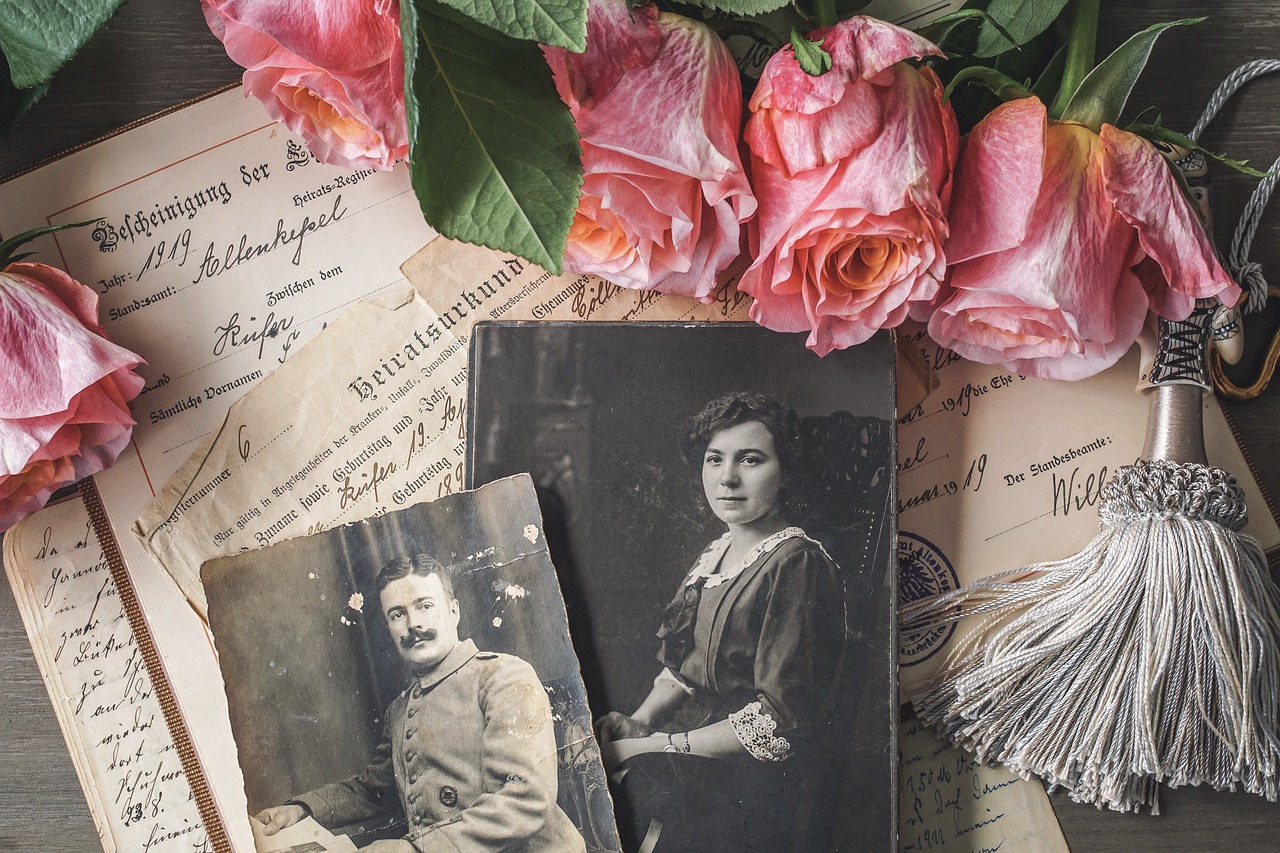
Preserve Originals
While including originals is essential, you may want to preserve the delicate and irreplaceable artifacts separately. Scan and print copies to use in your scrapbook, ensuring the safety of the originals.
Preserving cherished originals in your scrapbook is a testament to their importance and sentimental value, but it’s equally crucial to safeguard these delicate and irreplaceable artifacts. To strike the perfect balance between showcasing them in your scrapbook and ensuring their long-term preservation, consider the following steps:
Digitization for Posterity: Scanning your delicate originals is like creating a digital safety net for your precious artifacts. It allows you to capture every intricate detail and color while providing a secure backup. High-resolution scans are especially valuable as they can be reprinted or reproduced in various sizes, ensuring that the essence of the original is retained.
Printing with Precision: When you print copies of your scanned originals, invest in high-quality printing to replicate the textures, colors and fine details faithfully. Acid-free and archival-quality paper ensures that your printed copies stand the test of time without deteriorating or yellowing.
Protective Enclosures: To safeguard the originals, consider storing them in protective enclosures such as archival-quality sleeves, envelopes or acid-free tissue paper. These enclosures shield delicate items from environmental factors like light, moisture and pollutants, which can cause fading or damage over time.
Label and Document: Proper labeling is essential for maintaining the historical context of your originals. Ensure that you document essential information such as the date, location and significance of the artifact. This not only adds depth to your scrapbook but also preserves the story behind each piece.
Selective Display: Rather than including every original in your scrapbook, be selective about the pieces you choose to showcase. Focus on items that have the most profound emotional or thematic connection to your scrapbook’s narrative. This selective approach allows you to curate a meaningful and cohesive visual story.
Consider an Artifacts Page: If you have a collection of delicate originals, consider dedicating an entire page or section of your scrapbook to them. This special “artifacts page” can serve as a dedicated space to highlight these treasures, allowing them to shine without overwhelming the rest of the layouts.
Mindful Placement: When integrating the scanned copies into your scrapbook, think about placement and design. Carefully consider the visual flow and ensure that these copies enhance the overall aesthetics of your layouts. They should seamlessly blend with the rest of your creative elements.
Backup Digital Files: Besides having printed copies, it’s wise to keep backup digital files of your scanned originals. Store them securely on multiple devices or in cloud storage to guarantee their accessibility in case you ever need to reproduce or reference them.
Share the Story: Don’t forget to include a brief description or narrative alongside your scanned copies. Share the significance of these artifacts with your audience, whether they are family, friends or future generations. This storytelling element adds depth and connection to your scrapbook.
In summary, preserving delicate and irreplaceable artifacts in your scrapbook is a delicate balancing act between showcasing their beauty and ensuring their long-term protection. By scanning, printing and using protective enclosures, you can safeguard the originals while still creating a visually captivating and emotionally resonant scrapbook. Ultimately, this approach allows you to celebrate the past while securing its legacy for the future, ensuring that the memories associated with these artifacts endure through the pages of your cherished scrapbook.
Should you desire more in-depth information, it’s available for your perusal on this page: From Our Corner | WA Secretary of State

Embrace Creative Freedom
Heritage scrapbooking allows for artistic expression. Experiment with vintage-inspired layouts, incorporate heritage-inspired colors and use embellishments that reflect the era you’re documenting.
Heritage scrapbooking is a captivating journey through time, where the past comes alive through artistic expression. It offers a unique opportunity to delve into your family’s history, capture the essence of bygone eras and celebrate the legacy of your ancestors. As you embark on this creative endeavor, here are some exciting ways to infuse your heritage scrapbook with artistic flair:
Vintage-Inspired Layouts: Transport your viewers to the past by experimenting with vintage-inspired layouts. These layouts often feature design elements reminiscent of different historical periods. Consider using ornate frames, antique-style fonts for titles and journaling and distressed or aged paper backgrounds. This vintage touch adds authenticity to your heritage pages.
Heritage-Inspired Colors: Selecting colors that reflect the era you’re documenting can evoke a strong sense of nostalgia. Research the color palettes that were popular during the time your ancestors lived and incorporate them into your layouts. For example, muted earth tones might represent the rustic charm of a bygone countryside, while pastels could capture the elegance of a particular era.
Embellishments with Historical Significance: Seek out embellishments that have historical significance or represent the period you’re showcasing. Vintage buttons, lace, fabric scraps, postcards and ephemera from the past can be wonderful additions. These tactile elements not only enhance the visual appeal but also connect viewers to the stories you’re sharing.
Family Heirlooms: Integrate family heirlooms into your scrapbook whenever possible. Items like old photographs, letters, recipes or personal artifacts provide a direct link to your heritage. Incorporate these treasures as focal points or accents, allowing them to tell their own stories.
Thematic Pages: Create thematic pages that reflect specific aspects of your family’s history or traditions. For example, if your ancestors had a strong connection to farming, design a layout that pays tribute to their agricultural legacy. Use related imagery, like tractors, farm animals or vintage farming tools, to enrich your storytelling.
Timeline of Generations: Consider designing a timeline of generations that visually traces your family’s heritage. This can be a captivating way to illustrate the passage of time and the connections between different family members. Use photographs, names and birthdates to create a visual genealogy.
Handwritten Notes and Letters: If you have handwritten notes, letters or diaries from your ancestors, incorporate them into your layouts. These authentic writings provide a personal and intimate glimpse into the past. You can scan and print them to include as overlays or background elements.
Customized Heritage Elements: Craft custom heritage elements like family crests, monograms or coat of arms. These can serve as recurring motifs throughout your scrapbook, adding a touch of regal elegance and personal significance.
Storytelling Journaling: Devote time to storytelling journaling. Share anecdotes, family legends and historical context to enrich the narrative of your heritage pages. This detailed storytelling not only educates but also connects your readers emotionally to the past.
Layering for Depth: Incorporate layering and dimension techniques to add depth and visual interest to your heritage layouts. Vintage photographs, documents and embellishments can be layered strategically to create visually compelling compositions.
Remember, heritage scrapbooking is a labor of love and your artistic expression has the power to honor and preserve the rich tapestry of your family’s history. Each layout becomes a tribute to the generations that came before you, ensuring that their stories live on for future generations to cherish and appreciate. By infusing your heritage scrapbook with artistic flair, you not only celebrate your family’s legacy but also craft a stunning visual narrative that captivates and educates.
Looking for more insights? You’ll find them right here in our extended coverage: Exploring Family Heritage and Personal Space to Find Meaning and …

Use Historical Backgrounds
Incorporate historical backgrounds, maps or images that provide context to your family’s story. This adds a layer of historical authenticity to your scrapbook.
Infusing your family’s story with historical backgrounds, maps or relevant images is like opening a window to the past within your scrapbook. It’s a profound way to transport both yourself and your viewers back in time, creating a vivid connection to the historical context of your family’s journey. Here’s how incorporating these elements can enrich your scrapbooking experience:
1. Historical Backgrounds: Choosing a background that reflects the era or location significant to your family’s story can be a transformative design choice. For instance, if you’re documenting your ancestors’ immigration journey, consider using a background that resembles an old-fashioned passport page or a vintage immigration document. This simple choice instantly transports viewers to the time and place when your family’s story began.
2. Maps: Maps are powerful tools for storytelling. They not only provide geographical context but also serve as visual aids that trace your family’s migrations and adventures. Include maps of ancestral homelands, migration routes or significant places. Annotations or dotted lines can help narrate the journey, offering viewers a clear understanding of the geographical aspects of your family’s history.
3. Historical Images: Incorporating relevant historical images or photographs from the time period you’re documenting adds authenticity and depth to your scrapbook. It’s like bringing your family’s history to life. For example, if you’re showcasing your grandparents’ love story from the 1940s, include images of the fashion, music and cultural icons of that era. These visuals create a rich tapestry that immerses viewers in the historical ambiance.
4. Memorabilia: Don’t forget to include family memorabilia from the past, such as letters, postcards, newspaper clippings or even vintage advertisements. These artifacts are not only historically authentic but also provide a tangible connection to the past. Their inclusion can spark conversations and storytelling, as you share the significance of each piece with your viewers.
By incorporating historical elements, you’re not just scrapbooking; you’re curating a living museum of your family’s heritage. It’s an invitation for viewers to step into a time machine and experience history through the lens of your ancestors. It fosters a sense of continuity and legacy, reminding everyone that they are part of an ongoing story that’s deeply rooted in the past.
As you design your scrapbook, consider how these historical elements can complement your family’s narrative. They not only add depth and authenticity to your pages but also create a captivating bridge between the past and present, ensuring that your family’s history is not just remembered but relived and celebrated for generations to come.
To delve further into this matter, we encourage you to check out the additional resources provided here: How to Create a Heritage Scrapbook – Family History Album
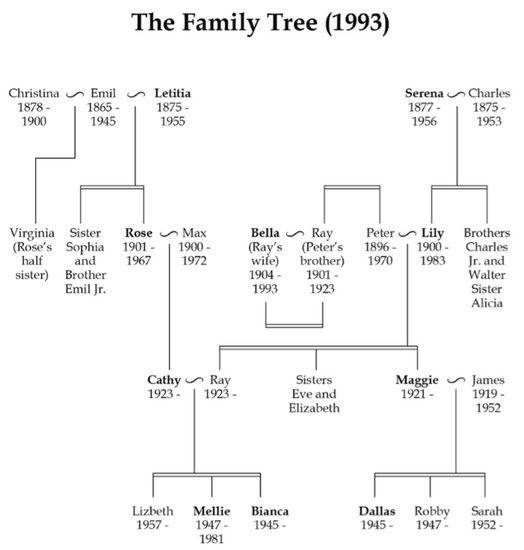
Incorporate Memorabilia
Don’t limit yourself to photographs. Include memorabilia such as tickets, postcards and even fabric swatches that were meaningful to your family. These items offer tangible connections to the past.
Expanding the scope of your scrapbooking beyond photographs is like opening a treasure chest of memories waiting to be rediscovered. In addition to photos, consider including a rich tapestry of memorabilia that tells a more complete and immersive story of your family’s history. These items are not just physical artifacts; they are portals to cherished moments and tangible connections to the past. Here’s why and how you should embrace the inclusion of various memorabilia in your scrapbooking endeavors:
Multisensory Experience: Memorabilia engages multiple senses, creating a multisensory experience that transcends the visual. When you include items like tickets, you bring back the sensation of holding them, the sound of the event and even the smells associated with those moments. This deeper level of engagement enriches the narrative and evokes powerful emotions.
Contextual Storytelling: Memorabilia adds context to your family’s story. A postcard from a vacation destination, a ticket stub from a concert or a swatch of fabric from a cherished outfit all provide clues about the events and experiences that shaped your family’s history. They serve as breadcrumbs that guide your audience through the timeline of your family’s journey.
Personal Connection: Memorabilia items often carry personal significance. They may have been collected during special outings, celebrations or meaningful milestones. When incorporated into your scrapbook, they resonate with authenticity and create a personal connection between the viewer and the documented moments.
Preservation of Fragile Items: Many memorabilia items are fragile and susceptible to deterioration over time. By including them in your scrapbook, you’re not only preserving their physical integrity but also safeguarding the memories they represent for future generations.
To effectively incorporate memorabilia:
Organize and Catalog: Begin by organizing your memorabilia items, categorizing them by type or theme. Create a catalog or list to keep track of what each item represents and its associated story.
Use Acid-Free Storage: Invest in acid-free storage solutions for your memorabilia, such as archival-quality envelopes, sleeves or pockets. These protect items from deterioration and acids that may be present in standard materials.
Layout Integration: Plan your layout to seamlessly integrate memorabilia. Create pockets or envelopes within your scrapbook pages to house these items. You can also incorporate them directly into your designs, using them as embellishments or background elements.
Tell the Story: Don’t forget to narrate the stories behind the memorabilia. Explain their significance, the events they’re associated with and the emotions they evoke. This storytelling brings context and depth to your scrapbook.
Consider Scanning: For particularly delicate items or those you’re hesitant to physically adhere to your pages, consider scanning or photographing them. You can then print these digital representations and include them in your layout.
Including memorabilia in your scrapbooking not only honors the past but also transforms your creations into cherished time capsules. These tangible connections to bygone moments invite viewers to step into the past, experience history firsthand and forge deeper connections with your family’s unique journey through the years.
To expand your knowledge on this subject, make sure to read on at this location: NEH grants
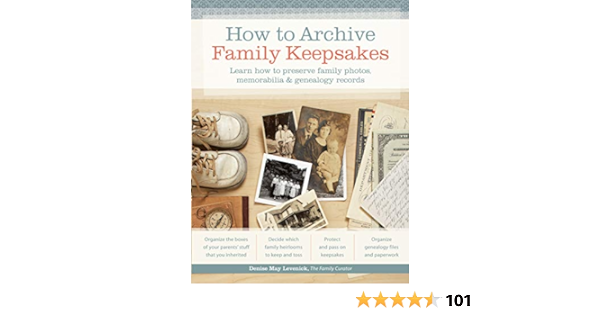
Personal Reflections
Share your own reflections and connections to the family history you’re documenting. Your personal perspective adds an intimate touch to the scrapbook.
In the intricate tapestry of family history, your scrapbook is more than just a collection of facts and photos; it’s a living document infused with your unique perspective and heartfelt reflections. Sharing your own thoughts and connections to the family history you’re documenting not only adds an intimate touch but also enriches the narrative, creating a bridge between the past and the present.
Your personal perspective is a treasure trove of insights that breathe life into the names and faces of your ancestors. As you leaf through old photographs and read through ancestral stories, take a moment to ponder your own thoughts and emotions. What does this particular ancestor’s journey mean to you? How does their experience resonate with your own life? By sharing these reflections, you create a deeper, more meaningful connection with your family’s past.
Consider the impact of personal anecdotes and reminiscences. These glimpses into your own experiences can serve as a bridge between generations, helping younger family members relate to the stories of their ancestors. For instance, you could share how your great-grandmother’s dedication to education inspired your own pursuit of knowledge or how your grandfather’s love for gardening passed down through the generations. These connections add layers of understanding and appreciation to the family history you’re preserving.
Furthermore, your reflections can help contextualize the family’s journey within the broader historical and cultural landscape. You might discuss how your ancestors’ immigration experience mirrors the stories of countless others who sought a better life in a new land. Or, you could reflect on how societal changes and milestones impacted your family, such as the influence of world events on their choices and aspirations.
Your scrapbook, with your personal perspective woven into its pages, becomes a living testament to the interplay between individual lives and the larger currents of history. It captures not only names and dates but also the essence of the human experience—the dreams, struggles and triumphs that define us as a family and as individuals.
Moreover, your reflections encourage future generations to engage with their own family history. They serve as an invitation for younger family members to ask questions, seek understanding and explore their own connections to the past. In this way, your scrapbook becomes a catalyst for preserving and passing down the rich tapestry of your family’s story.
In conclusion, sharing your personal reflections and connections in your family history scrapbook is a profound act of storytelling. It transforms a collection of facts into a vibrant narrative that resonates with the hearts and minds of those who peruse its pages. Your perspective adds depth, context and a sense of intimacy, ensuring that your family’s history is not just documented but also felt, appreciated and cherished by generations to come.
Should you desire more in-depth information, it’s available for your perusal on this page: Home — NEDCC

Preserve for the Future
Invest in archival-quality materials to ensure the longevity of your heritage scrapbook. Acid-free papers, photo-safe adhesives and protective page sleeves are essential.
Investing in archival-quality materials is a crucial step to preserve the precious memories within your heritage scrapbook for generations to come. Here’s why it’s essential and how these materials can safeguard your cherished memories:
Preservation of History: Heritage scrapbooks are often repositories of family history and legacy. They contain photographs, documents and mementos that span decades or even centuries. Using archival-quality materials ensures that these irreplaceable items won’t deteriorate over time. Acid-free papers, for instance, prevent yellowing and brittleness, preserving the visual and structural integrity of your pages.
Protection Against Acid: Acidic materials can accelerate the degradation of your photos and documents. Archival papers and adhesives are pH-neutral, meaning they won’t produce harmful acids that can eat away at your photographs or other elements. This protection is paramount for black-and-white photos, which are particularly susceptible to acid damage.
Photo-Safe Adhesives: Photo-safe adhesives are specially formulated to adhere without causing harm to your pictures. Regular glue or tape can contain chemicals that interact with your photos, causing discoloration or sticking. With archival adhesives, you can confidently attach your items without worrying about long-term damage.
Preventing Sticking and Transfer: Over time, photos and memorabilia can stick together or transfer ink onto adjacent pages. Archival-quality materials, such as protective page sleeves or interleaving sheets, act as a barrier, preventing these issues. They also shield your items from fingerprints, dust and moisture.
UV Protection: Many archival page protectors come with UV-blocking properties. This shields your photos from harmful ultraviolet rays, which can fade and deteriorate images over time. This added layer of protection is especially crucial if your scrapbook is displayed in well-lit areas.
Durability: Heritage scrapbooks are often handled frequently, whether shared with family members or displayed at special occasions. Archival-quality materials are designed for durability, resisting wear and tear to ensure your scrapbook remains intact for years.
Future Generations: Your heritage scrapbook is a gift for future generations. By investing in archival-quality materials, you’re ensuring that your family’s history and stories are preserved in their full glory. It’s a gesture of love and respect for your ancestors and an invaluable resource for your descendants.
In summary, using archival-quality materials in your heritage scrapbook is a proactive measure to protect and preserve your family’s legacy. These materials guard against deterioration, acid damage and other potential threats to your memories, ensuring that your scrapbook remains a timeless and treasured record of your family’s history. So, when you embark on this meaningful journey, make the choice to invest in materials that honor and safeguard your heritage.
Should you desire more in-depth information, it’s available for your perusal on this page: Past Grant Awardees | Oklahoma Historical Society

Share and Celebrate
Once your heritage scrapbook is complete, share it with your family. Consider organizing a gathering or reunion where you can unveil the scrapbook and celebrate your shared history together.
Once your heritage scrapbook is complete, share it with your family. Consider organizing a gathering or reunion where you can unveil the scrapbook and celebrate your shared history together. This unveiling can be a heartwarming moment, as family members reminisce about the past, share stories and reconnect with their roots. It’s a beautiful way to strengthen family bonds, instill a sense of pride in your heritage and create lasting memories for generations to come. The scrapbook becomes a cherished family heirloom, preserving not only the history but also the love and togetherness that define your family.
To expand your knowledge on this subject, make sure to read on at this location: 3 Family History Book Ideas (and How to Create Them)
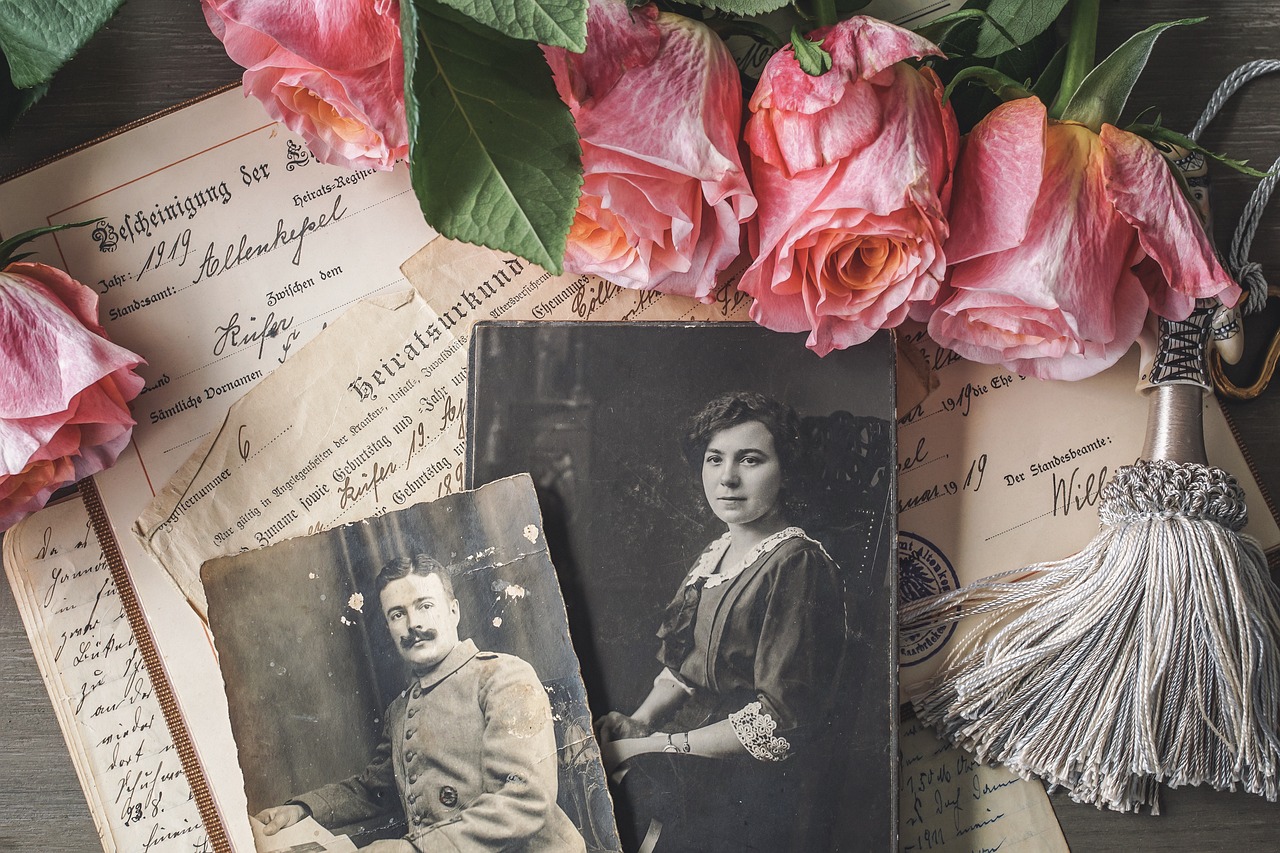
Offering Additional Insight
Heritage scrapbooking is a meaningful and creative endeavor that connects you with your family’s past while allowing you to express your artistic talents. By gathering family artifacts, organizing materials and telling the stories of your ancestors, you create a cherished heirloom that not only preserves your family’s history but also strengthens the bonds between generations. So, pick up your scrapbooking supplies, embrace the art of heritage scrapbooking and embark on a journey to honor and celebrate your family’s unique story.
Heritage scrapbooking is a heartfelt journey through time, where the pages of your scrapbook become a canvas for preserving and celebrating your family’s legacy. It’s not just a creative endeavor; it’s a profound exploration of your roots that weaves together the threads of the past, present and future. Here’s why heritage scrapbooking is a meaningful and rewarding venture:
Connecting Generations: Heritage scrapbooking is a bridge between generations. It allows you to connect with ancestors you may have never met and introduce their stories, faces and experiences to younger family members. It fosters an appreciation for the rich tapestry of your family’s history, fostering a sense of continuity and belonging.
Preserving Precious Artifacts: Your family’s history is often hidden within old photographs, letters, diaries and keepsakes. Heritage scrapbooking gives you the opportunity to carefully preserve and showcase these precious artifacts. By incorporating them into your layouts, you breathe new life into these historical treasures, ensuring they’re not lost to time.
Artistic Expression: While heritage scrapbooking is deeply rooted in storytelling, it’s also a platform for your creative talents to shine. You can experiment with design, layout and color choices to evoke different eras or moods. The blend of creativity and historical documentation allows you to express your unique artistic vision.
An Evolving Journey: Heritage scrapbooking is a journey that evolves over time. As you delve deeper into your family’s history, you may uncover new stories, photographs or details that enrich your scrapbook. It’s a dynamic project that can be revisited and expanded upon as your research and family connections grow.
Respecting and Honoring Ancestors: Crafting a heritage scrapbook is a tangible way to show respect and honor to your ancestors. By carefully curating their stories, you ensure that their lives and contributions are remembered and celebrated by current and future generations. It’s a loving tribute to those who came before you.
Preserving Cultural Heritage: Heritage scrapbooking is not only about individual family stories but also a means of preserving cultural heritage. It allows you to document traditions, customs and experiences that are specific to your family’s background. This cultural preservation ensures that your heritage continues to thrive.
Strengthening Family Bonds: Working on a heritage scrapbook can be a collaborative effort that brings family members together. It encourages sharing of memories and stories, sparking conversations that strengthen family bonds. It’s a project that fosters a sense of unity and shared identity.
In conclusion, heritage scrapbooking is a profound journey of discovery, creativity and connection. It honors the past while celebrating the present, creating a cherished heirloom that tells the unique story of your family. So, gather your family artifacts, embrace your artistic talents and embark on this meaningful endeavor to ensure that your family’s history is not forgotten but cherished for generations to come.
Should you desire more in-depth information, it’s available for your perusal on this page: NEH grants
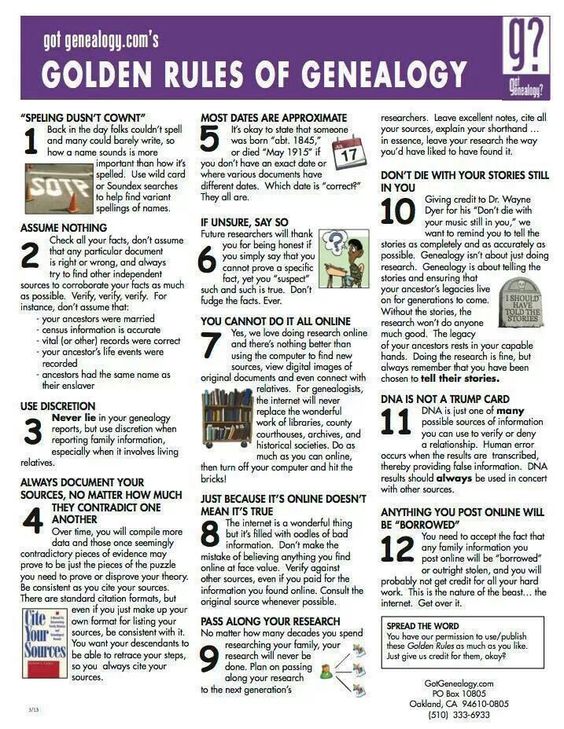
More links
To delve further into this matter, we encourage you to check out the additional resources provided here: How to Create a Heritage Scrapbook – Family History Album
